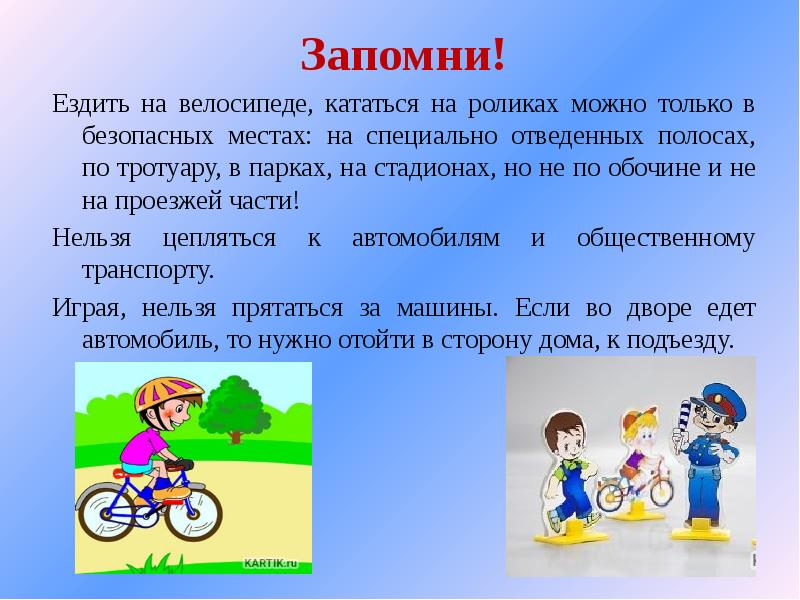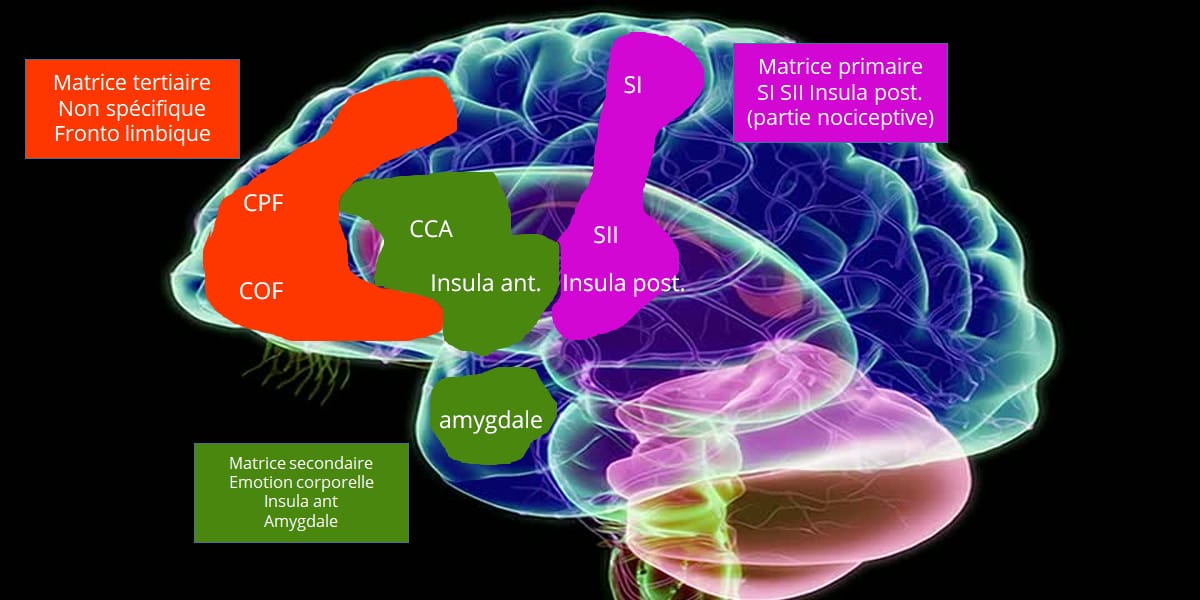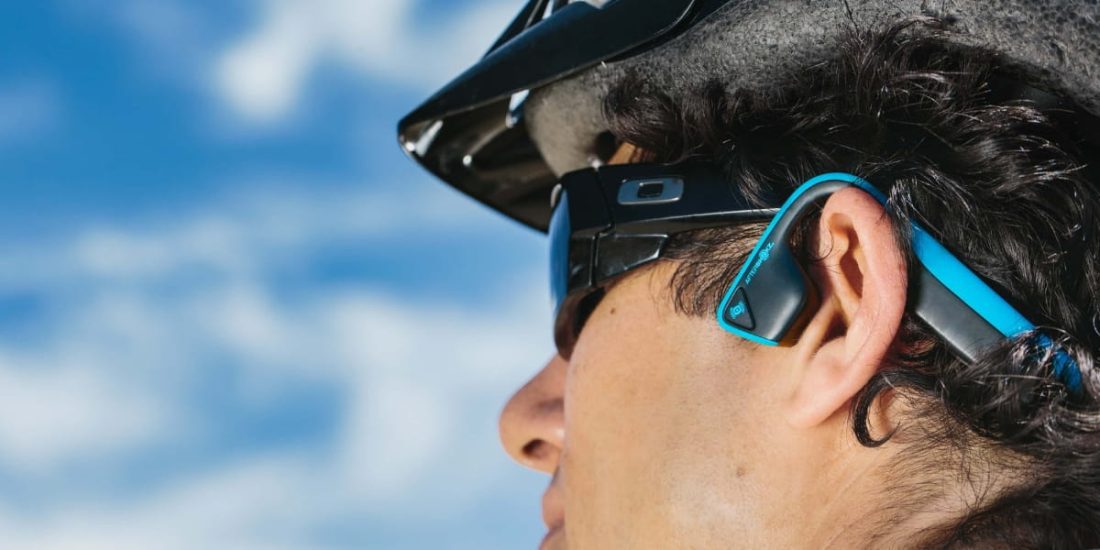
Relieve Mountain Biking Pain Through Neurology
Content
How to overcome pain while mountain biking? Who has never experienced pain on a mountain bike?
(Maybe a person who has never experienced pain, but in this case, this is a condition called congenital analgesia, in which a person can injure themselves without even realizing it!)
Should we listen to this pain or overcome it? What does it mean?
The practice of mountain biking and sports in general induces a number of hormonal reactions.
For example, we find endorphins (exercise hormones) that play an important role. They are produced by the brain. They were recently discovered in areas of the brain that process what's called nociception (the perception of stimuli that cause pain).
We can qualify endorphin as a naturally occurring antibody released during exercise.
The more intense the activity, the more it is released and causes a feeling of satisfaction, sometimes to the extent that the athlete becomes "addicted".
We also find serotonin, dopamine, and adrenaline: neurotransmitters that soothe pain and provide a sense of well-being. The sensation of pain in an athlete and a non-athlete is felt differently.
It is modified by the ability to transcend oneself. According to Lance Armstrong, "Pain is temporary, failure is permanent."
Many stories tell of exploits and praise some athletes who knew how to overcome their pain. They are right?
Training teaches athletes to expand their capabilities, because in sports practice there is almost always pain. It can also be a sign of simple body pain or a prediction of a more serious injury. Pain is a warning signal that needs to be listened to and understood.
Pain and neurobiology

The analgesic effect of pain, that is, the ability of pain to relieve pain, has been identified in neurobiological research.
This effect can last for more than just physical activity.
This was recently shown in an Australian study (Jones et al., 2014) in which participants were asked to do three indoor cycling sessions per week.
The researchers measured pain sensitivity in 24 adults.
Half of these adults were considered active, that is, they agreed to participate in a physical training program. The other half were considered inactive. The study lasted 6 weeks.
The researchers noted two measures:
- pain threshold, which is determined by the one from which a person feels pain
- pain tolerance threshold at which pain becomes unbearable.
These two thresholds can vary greatly from one person to the next.
Patients were given pressure pain regardless of whether they were enrolled in a physical training program (active group) or not (inactive group).
This pain was administered before training and 6 weeks after training.
The results showed that the pain thresholds of 12 active volunteers changed, while the thresholds of 12 inactive volunteers did not change.
In other words, the trained subjects apparently still felt the pain caused by the pressure, but became more tolerant and more tolerant of it.
Everyone has their own threshold of tolerance, the perception of pain is always very subjective, and everyone must know himself in accordance with his experience, level of training and his own experience.
How is pain regulated?
Several studies have identified a "matrix" of pain that is activated in response to physically harmful stimuli. The INSERM research group (Garcia-Larrea & Peyron, 2013) has categorized the responses into three priority components:
- nociceptive matrix
- 2nd order matrix
- 3nd order matrix
Defining this matrix helps us understand how to regulate pain.

Schematic representation of the pain matrix and the three levels of integration (by Bernard Laurent, 3 y.o., based on the model developed by García-Larrea and Peyron, 2013).
Abbreviations:
- CFP (prefrontal cortex),
- KOF (orbito-frontal cortex),
- CCA (anterior cingulate cortex),
- primary somato-sensory cortex (SI),
- secondary somatosensory cortex (SII),
- insula antérieure (island ant),
- insula postérieure
Experimental pain activates areas of somatic representation (Fig. 1), in particular the primary somatosensory (SI) area located in our parietal lobe and where the body is represented on a brain map.
The secondary somatosensory parietal region (SII) and especially the posterior insula govern the physical data of the stimulus: this sensory discrimination analysis allows pain to be located and qualified to prepare an appropriate response.
This “primary” and “somatic” level of the matrix is complemented by the motor level, where the motor cortex allows us to respond, for example by pulling back our hand when we burn ourselves. The second level of the matrix is more integrative than the primary level, and is associated with severe suffering: the reactions of the anterior insular part and the anterior cingulate cortex (Fig. 1) are proportional to the discomfort felt during pain.
These same areas are activated when we imagine ourselves to be in pain or when we see a sick person. This cingulate response is determined by parameters other than the physical characteristics of pain: attention and anticipation.
Finally, we can identify a third level of the fronto-limbic matrix involved in the cognitive and emotional regulation of pain.
In short, we have a “somatic” level, an “emotional” level, and the final level of regulation.
These three levels are interconnected, and there is a control, regulatory circuit that can suppress the physical sensation of pain. Thus, the "somatic" pathways can be modulated by the descending braking system.
This inhibitory system mainly exerts its action through endorphins. The central relays of this descending circuit include, among others, the frontal cortex and the anterior cingulate cortex. Activating this inhibitory descending system can help us control our pain.
In other words, we all feel pain, but we can relieve it using a variety of cognitive and emotional regulation techniques.
How to deal with pain?

What then are the tips on how to "pass the pill" without doping, without medication Thanks to current research and our understanding of brain circuits, we can offer you some of them:
Exercise
As we saw earlier, a subject who is exercising is active feels less pain than an inactive person.
The athlete who trains already knows his efforts. However, when a person knows in advance the onset of pain, most of the afferent regions of the brain (primary somatosensory cortex, anterior cingulate cortex, islet, thalamus) already exhibit increased activity compared to the resting phase (Ploghaus et al., 1999).
In other words, if a person imagines that their pain is going to be severe, they will worry more and feel more pain. But if a person already knows how painful he is, he will better anticipate him, anxiety will decrease, like pain.
Mountain biking is a well-known theme, the more you exercise, the less effort causes stiffness or fatigue. The easier it becomes to practice.
Understand your pain
We quoted it, we quote it again, so that this trick will take on all its meaning. In the words of Armstrong, "pain is temporary, surrender is forever." Pain becomes more tolerable if it allows us to achieve a goal that matches our ambitions, for example, if it gives the impression that we are part of an "elite", exceptional. Here the pain is not dangerous, and the power to restrain and reduce it is felt.
For example, research has created the illusion that volunteers can stop pain or actually stop it. Notably, regardless of whether this control is real or imagined, the authors found decreased brain activity in areas that control physical pain sensation and increased activity in the ventro-lateral prefrontal cortex, an area of the frontal lobe that appears to control a downward braking system. (Wiech et al., 2006, 2008).
In contrast, other studies (Borg et al., 2014) have shown that if we perceive pain as too dangerous, we perceive it as much more intense.
Divert his attention
Although pain is interpreted as a warning signal and thus automatically attracts our attention, it is quite possible to distract from this sensation.
Various scientific experiments have shown that cognitive efforts, such as mental computation or focusing on a sensation other than pain, can reduce activity in afferent regions of pain and increase the intensity of interaction with regions of pain. A descending pain control system, again leading to a decrease in pain intensity (Bantick et al., 2002).
On a bike, this can be used during an intense climb or sustained effort, or during a fall with an injury, while waiting for help, or more often when you are sitting in the saddle for a long time at the start of the season. becomes heavy (due to forgetting to use barrier balm?).
Listen to music
Listening to music can help you take your mind off the pain while exercising. We have already explained what this distraction technique is. But also, listening to music can create a positive mood. However, mood affects our perception of pain. Emotional regulation appears to affect the ventro-lateral prefrontal cortex, as we recently mentioned.
In addition, a study (Roy et al., 2008) showed that resistance to heat pain increases when listening to pleasant music compared to music with a negative connotation or silence. The researchers explain that music will have an analgesic effect by releasing opioids like morphine. In addition, the emotions generated by listening to music activate areas of the brain involved in pain regulation, such as the amygdala, prefrontal cortex, cingulate cortex, and the entire limbic system, including our emotional regulation (Peretz, 2010).
For mountain biking during intense workouts, grab your headphones and play your favorite music!
Meditate
The beneficial effects of meditation on the brain are increasingly recognized. Meditation can be the subject of mental prep work that helps you better deal with pain by focusing on the positive elements. However, focusing on the positive elements, in fact, induces a positive mood.
Meditation can also help the athlete recover through relaxation and relaxation. Among the tools most often offered in psychological preparation, we also find neurolinguistic programming (NLP), sophrology, hypnosis, mental visualization, etc.
Reduce pain when mountain biking
There are many other tips that are becoming more popular now. This emotional and cognitive regulation of pain is emphasized in the light of current neurobiological knowledge. However, its effect can differ from one person to another. First of all, it is important to know yourself well in order to apply the "correct" technique. It's also important to evaluate ourselves well in order to know how to stop in time during sports, because let's not forget that pain can be a warning signal that is necessary for our survival.
You must know yourself well and improve in your practice in order to apply the correct pain-relieving technique.
Cycling is a full-fledged physical activity, increases stamina, and is good for health. Cycling reduces the risk of diseases, especially the risk of heart attack.
However, mountain biking is particularly painful and important to prevent.
They can be fully anticipated from a biomechanical point of view by adjusting the bike as much as possible in accordance with the morphological characteristics of the mountain biker. However, this will not be enough. The pain will come at one point or another. Those who are accustomed to mountain biking are familiar with these specific pains that spread to the buttocks, calves, hips, back, shoulders, wrists.
The body suffers from pain, it is the mind that has to calm it down.
Specifically, how do you apply the above tips when mountain biking?
Let's give a more specific example of listening to music.
You might argue that pedaling while listening to music is unsafe. No! There are speakers that can be mounted on the bike, on the wrist, connected mountain bike helmets, or finally in bone conduction helmets.

Thus, the ear can hear sounds from the environment. Ideal for simultaneously stimulating oneself during particularly tiring walks, as Atkinson et al. (2004) specifically shows that listening to music at a faster pace can be more effective.
The researchers subjected 16 participants to a stress test.
They had to complete two 10K time trial with and without trance music. Runners, listening to music at a fast pace, added speed to their performance. Listening to music also made it possible to forget about a bout of fatigue. Music distracts from work!
However, some people usually don’t listen to music, don’t like to listen to it, they are worried about music while mountain biking, or they prefer not to disturb nature.
Another technique is meditation: mindfulness meditation, which requires the mobilization of attention.
Sometimes the race is long and technical, so you need to be careful. Mikael Woods, a professional cyclist, explains in an interview: “When I do light workouts, I listen to music, talk to friends. But in more specific activities, I completely focus on what I do. For example, today I was doing a time trial workout, and the purpose of that workout was to be in the moment and feel the effort to fully understand what was going on. "
He explains that he visualizes his route during the race, but only km per km, and does not represent it all at once. This technique allows him not to be overwhelmed by the "scale of the task." He also explains that he always tries to embrace "positive thinking."
The mindfulness meditation technique is well suited for the practice of cycling and mountain biking in particular, because sometimes the dangerous nature of the trails leads to good concentration and at the same time is enjoyable. Indeed, those who regularly ride mountain bikes know this feeling of pleasure from superiority over themselves, from the intoxication of speed, for example, while descending on a single track.
Mountain biking practice is rich in sensations, and we can learn to perceive them moment by moment.
The mountain biker testifies, explaining that instead of listening to music to forget about his efforts, he focuses on the sounds of his surroundings. “What do I listen to on a mountain bike? Tire noises, wind buzzing in the ears on descent, wind buzzing in the trees on the way up, birds, brutal silence when driving on slightly damp ground, then chips on the frame afterwards, the side crampons struggled not to pick up ... brake growl before I I rest my ass on the rear wheel, like a saguin, at a speed of 60 km / h, while the fork turns a little ... A helmet that rubs the vegetation a little ... "
Based on this latest evidence, we can say that the practice of mountain biking is rich in sensations and that you can tame them to reduce your pain.
Know how to use them, feel them, and you will become even more resilient!
references
- Atkinson J., Wilson D., Eubank. The influence of music on the distribution of work during a cycling race. Int J Sports Med 2004; 25 (8): 611-5.
- Bantik S.J., Wise R.G., Ploghouse A., Claire S., Smith S.M., Tracy I. Visualization of how attention modulates pain in humans using functional MRI. Brain 2002; 125: 310-9.
- Borg C, Padovan C, Thomas-Antérion C, Chanial C, Sanchez A, Godot M, Peyron R, De Parisot O, Laurent B. Pain-related mood affects pain perception differently in fibromyalgia and multiple sclerosis. J Pain Res 2014; 7: 81-7.
- Laurent B. Functional images of pain: from somatic reaction to emotion. Bull. Acad. Natle Med. 2013; 197 (4-5): 831-46.
- Garcia-Larrea L., Peyron R. Pain matrices and neuropathic pain matrices: a review. Pain 2013; 154: Supplement 1: S29-43.
- Jones, MD, Booth J, Taylor JL, Barry BK .. Aerobic exercise improves pain tolerance in healthy people. Med Sci Sports Exerc 2014; 46 (8): 1640-7.
- Peretz I. Towards the neurobiology of musical emotions. In Juslin & Sloboda (ed.), A Handbook of Music and Emotion: Theory, Research, Applications, 2010. Oxford: Oxford University Press.
- Ploghaus A, Tracy I, Gati JS, Clare S, Menon RS, Matthews PM, Rawlins JN. Separating pain from anticipation in the human brain. Science 1999; 284: 1979-81.
- Roy M., Peretz I., Rainville P. Emotional valence promotes music-induced pain relief. 2008 Pain; 134: 140-7.
- Szabo A., Small A., Lee M. The Influence of Classical Slow and Fast Music on Progressive Cycling to Voluntary Exhaustion J Sports Med Phys Fitness 1999; 39 (3): 220-5.
- Vic K, Kalisch R, Weisskopf N, Pleger B, Stefan KE, Dolan RJ The anterolateral prefrontal cortex mediates the analgesic effect of expected and perceived pain control. J Neurosci 2006; 26: 11501-9.
- Wiech K, Ploner M, Tracey I. Neurocognitive aspects of pain perception. Trends Cogn Sci 2008; 12: 306-13.
